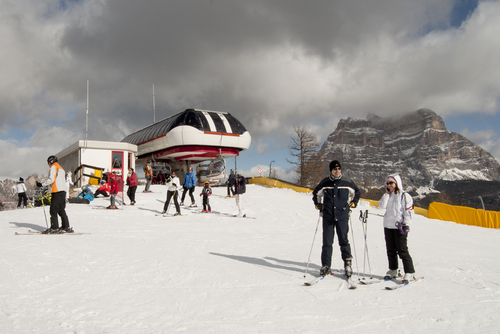A Look at Common Ski Area SPCC Violations
 |
Having an SPCC Plan that was not fully implemented. 40 CFR Section 112.3, states, “The owner or operator or an onshore or offshore facility subject to this section must prepare in writing and implement a Spill Prevention, Control, and Countermeasure Plan … in accordance with 112.7 [General Requirements for SPCC Plans] and any other applicable section of this part.”
Having an SPCC Plan that is not kept updated, not certified and reviewed by an engineer within 5 years of its previous review, and not signed by facility management. Section 112.5 (b) requires “a review and evaluation of the SPCC Plan at least once every five years from the date your facility becomes subject to this part.” Further, SPCC Plans must be amended within 6 months of the review “to include more effective prevention and control technology if the technology has been field-proven at the time of the review and will significantly reduce the likelihood of a discharge as described in §112.1(b) from the facility.” Any amendments must be implemented as soon as possible but not later than 6 months following their preparation. The completed review and evaluation must be documented and include a signed statement as to whether the Plan will be amended. Section 112.5(c) requires that, “Except as provided in [section] 112.6, [exception for Tier I facilities] have a Professional Engineer certify any technical amendments to your Plan in accordance with §112.3(d).”
TRAC360 for SPCC provides all of the PE-written and reviewed templates that you need to create your facility-specific required plans, checklists, and training. See how it can solve your top compliance challenges. Find out.
Failure to provide records documenting oil tank inspections. Section 112.7(e) requires that facilities “Conduct inspections and tests required by this part in accordance with written procedures that you or the certifying engineer develop for the facility. You must keep these written procedures and a record of the inspections and tests, signed by the appropriate supervisor or inspector, with the SPCC Plan for a period of three years. Records of inspections and tests kept under usual and customary business practices will suffice for purposes of this paragraph.”
Failure to provide records documenting employee training. Section 112.7(f) requires “(1) At a minimum, train your oil-handling personnel in the operation and maintenance of equipment to prevent discharges; discharge procedure protocols; applicable pollution control laws, rules, and regulations; general facility operations; and, the contents of the facility SPCC Plan. (2) Designate a person at each applicable facility who is accountable for discharge prevention and who reports to facility management. (3) Schedule and conduct discharge prevention briefings for your oil-handling personnel at least once a year to assure adequate understanding of the SPCC Plan for that facility. Such briefings must highlight and describe known discharges as described in [section] 112.1(b) or failures, malfunctioning components, and any recently developed precautionary measures.” In the rule, EPA’s training and briefing log example includes the date, description and scope, and attendees present at training/briefing sessions.
Failure to provide secondary containment for certain tanks. Section 112.7(c) requires that facilities subject to the SPCC rule provide containment or diversionary structures or equipment to prevent discharges as described in Section 112.1(b). Facilities must also construct all bulk storage container installations (except mobile refuelers) to provide a secondary means of containment for the entire capacity of the largest single container and sufficient freeboard to contain precipitation as provided by Section 112.8(c)(2). Owners or operators must ensure each bulk storage container meets the requirements in Section 112.8(c)(2), either individually or as part of a bulk storage container installation.
The Ultimate SPCC Compliance Tool
TRAC360 for SPCC is a powerful application that simplifies compliance with EPA’s Spill Prevention, Control, and Countermeasure rule. Whether you need help creating your facility-specific SPCC Plan, writing inspection checklists for your tanks, or training your oil-handling workforce, TRAC360 is there to help. Learn More.
Storing oil in tanks that were not designed nor constructed to be used in the manner they are being used. Section 112.8(c) requires that facilities must “Not use a container for the storage of oil unless its material and construction are compatible with the material stored and conditions of storage such as pressure and temperature.”
